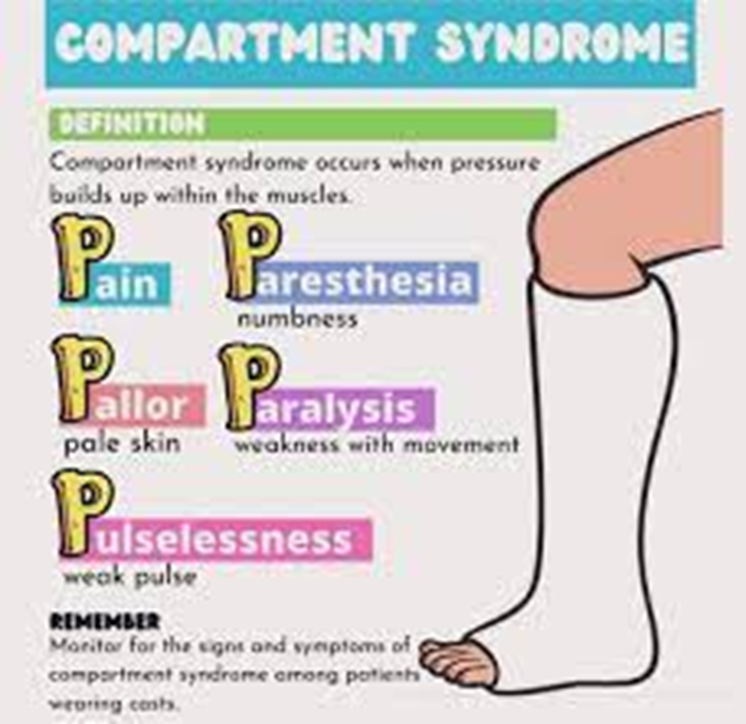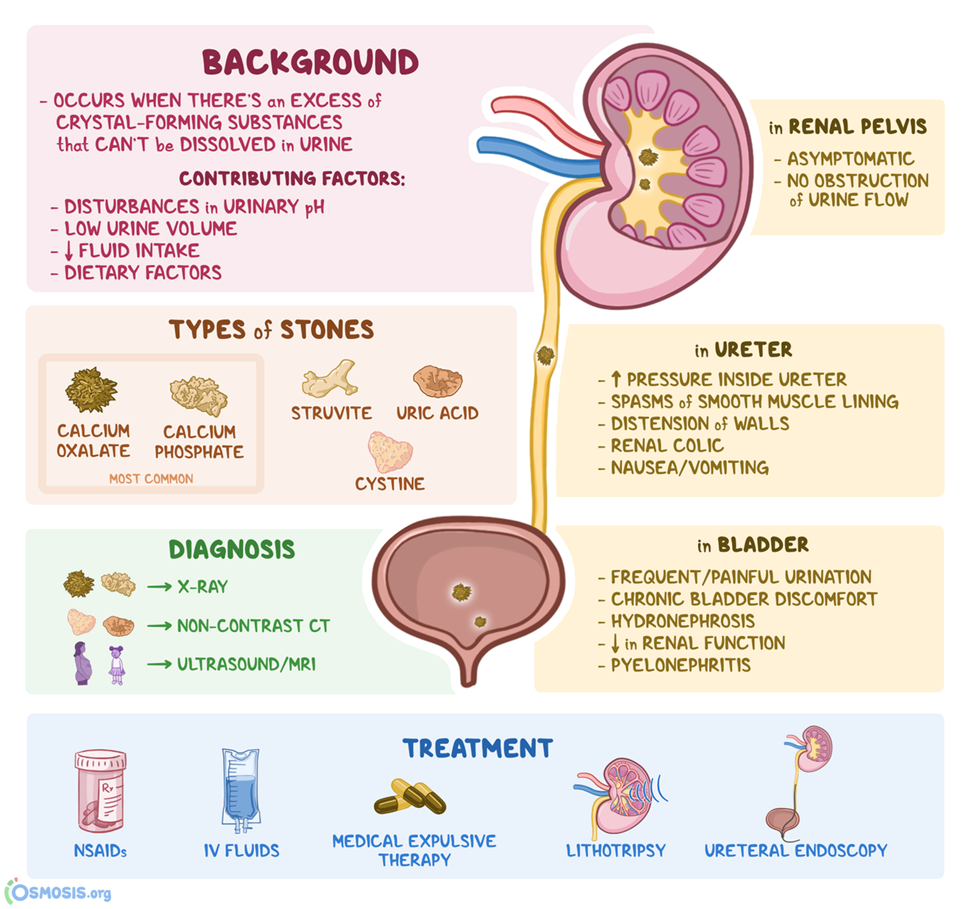After falling down the basement steps, a client is brought to the emergency room. X-rays confirms that the client's right leg is fractured. Following application of a leg cast, which assessment finding warrants immediate intervention by the nurse?
Increased temperature to lower extremity.
Right foot pale with sluggish capillary refill.
Circumferential edema of right foot.
Complaint of throbbing right leg pain
The Correct Answer is B
A. Increased temperature to the lower extremity:
While increased temperature could indicate inflammation or infection, it is not as immediately concerning as impaired circulation.
B. Right foot pale with sluggish capillary refill.
This finding suggests a potential impairment in blood flow to the right foot, which could be due to complications such as compartment syndrome or impaired circulation. Compartment syndrome is a serious condition that occurs when there is increased pressure within a muscle compartment, leading to reduced blood flow. Pale color and sluggish capillary refill indicate compromised circulation and require prompt intervention to prevent further damage.
C. Circumferential edema of the right foot:
Edema is a common finding after a fracture and cast application. However, in the context of pale color and sluggish capillary refill, it may indicate increased pressure within the compartment, requiring immediate attention.
D. Complaint of throbbing right leg pain:
Pain is a common complaint after a fracture, and throbbing pain may be expected. However, the priority is to address the potential compromise in circulation indicated by the pale color and sluggish capillary refill.

Nursing Test Bank
Naxlex Comprehensive Predictor Exams
Related Questions
Correct Answer is D
Explanation
A. Initiate cardiac telemetry:
Cardiac telemetry is not the immediate priority in this case. Kidney stones are more likely to cause severe localized pain rather than cardiac-related symptoms.
B. Administer a PRN dose of a laxative:
Laxatives are not indicated for the management of kidney stones or the associated flank pain. The priority is to address the specific needs related to the possible passage of kidney stones.
C. Implement seizure precautions:
Seizure precautions are not relevant to the sudden onset of severe flank pain in the context of hyperparathyroidism. The focus should be on managing pain, assessing for kidney stone passage, and addressing the underlying cause.
D. Begin straining all urine.
Straining all urine allows for the collection and examination of any passed stones. This information is important for identifying the composition of the stones and guiding further management.

Correct Answer is D
Explanation
A. Measure the client's blood pressure:
While monitoring blood pressure is an important aspect of assessing a client's overall condition, it is not the immediate priority in a suspected opioid overdose. Respiratory depression and difficulty in arousing are more critical concerns that warrant prompt intervention with naloxone.
B. Remove all of the morphine patches:
While eventually, the nurse will need to address the presence of multiple morphine patches, removing them is not the first action. Administering naloxone to reverse the opioid effects takes precedence over patch removal.
C. Apply oxygen per face mask:
While providing oxygen may be necessary to support respiratory function, it doesn't address the underlying cause of the respiratory distress, which is likely opioid toxicity. Administering naloxone is the more direct and immediate intervention to counteract the effects of the opioids.
D. Administer a narcotic antagonist:
This is the correct and immediate priority. If the client is difficult to arouse and has multiple morphine patches, it raises concerns about opioid toxicity. Naloxone is a narcotic antagonist that can reverse the effects of opioid overdose, particularly respiratory depression, and is crucial in this scenario to restore normal respiratory function.
Whether you are a student looking to ace your exams or a practicing nurse seeking to enhance your expertise , our nursing education contents will empower you with the confidence and competence to make a difference in the lives of patients and become a respected leader in the healthcare field.
Visit Naxlex, invest in your future and unlock endless possibilities with our unparalleled nursing education contents today
Report Wrong Answer on the Current Question
Do you disagree with the answer? If yes, what is your expected answer? Explain.
Kindly be descriptive with the issue you are facing.
